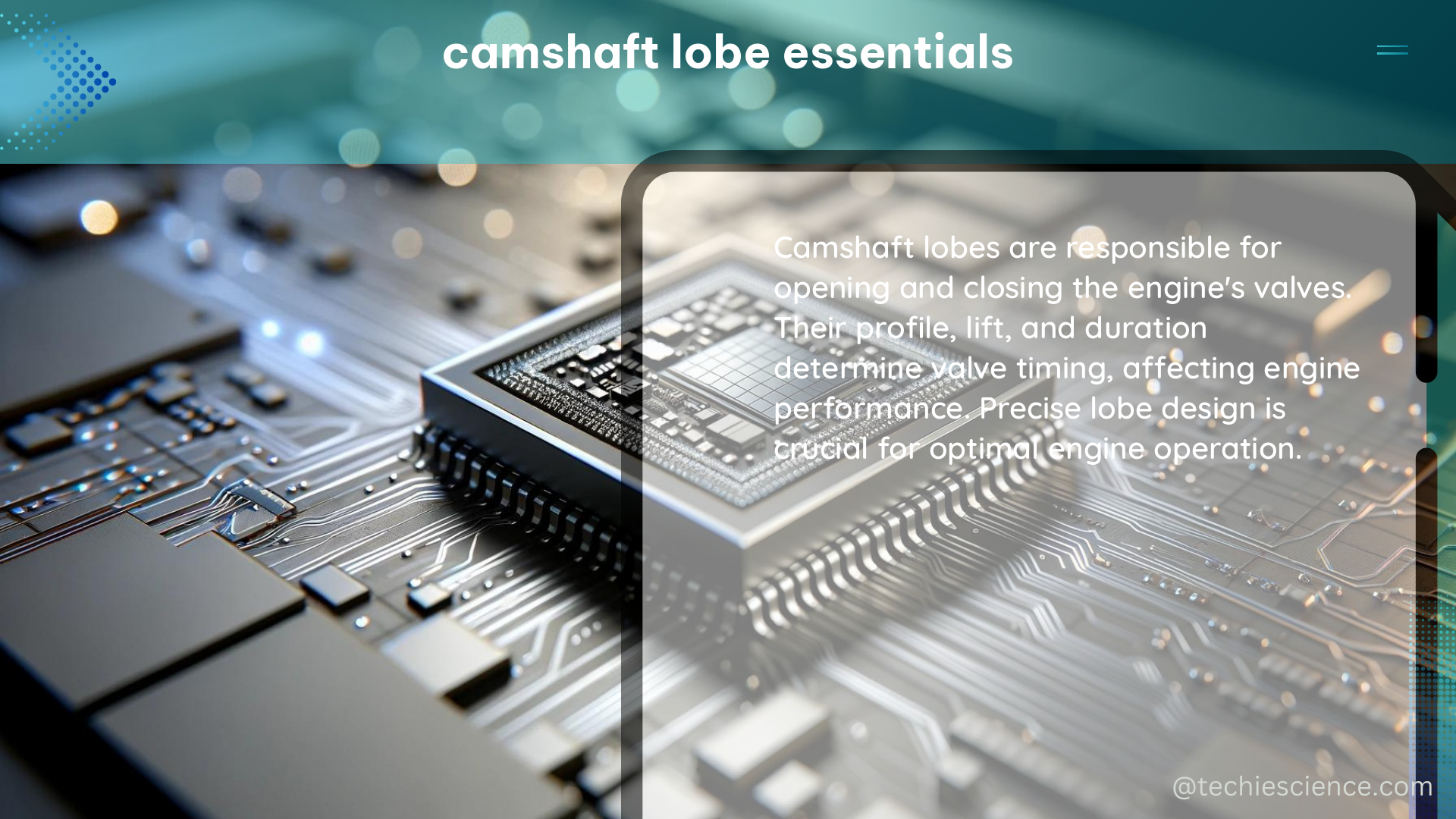Camshaft lobe essentials are the fundamental parameters that define an engine’s performance characteristics, such as power output, idle quality, and fuel efficiency. Understanding these critical factors is crucial for engine tuning, optimization, and achieving desired performance goals. In this comprehensive guide, we will delve into the intricacies of cam lobe separation, camshaft duration, and cam lift, providing you with the knowledge and tools to master these essential camshaft components.
Cam Lobe Separation: The Valve Timing Architect
Cam lobe separation, also known as lobe separation angle (LSA), is the angle in degrees between the maximum lift points of a pair of cam lobes, typically measured on standard V8 engines like the small block Chevy. This angle usually ranges between 104 and 115 degrees, and it plays a crucial role in determining the timing of the intake and exhaust valves.
| Lobe Separation Angle | Impact on Engine Performance |
|---|---|
| Narrower Angles (104-108 degrees) | Increases cylinder pressure, improves low-end torque, and reduces idle quality |
| Wider Angles (110-115 degrees) | Reduces cylinder pressure, improves idle quality, and increases idle vacuum |
The lobe separation angle significantly impacts the engine’s volumetric efficiency, as it determines the overlap between the intake and exhaust valve events. A narrower LSA increases the overlap, leading to higher cylinder pressures and improved low-end torque. Conversely, a wider LSA reduces the overlap, resulting in lower cylinder pressures, better idle quality, and increased idle vacuum.
Understanding the relationship between lobe separation angle and engine performance is crucial for selecting the appropriate camshaft for your specific application and tuning requirements.
Camshaft Duration: The Valve Event Timekeeper

Camshaft duration is the measurement of the time one valve begins to open until it finishes closing, expressed in degrees of crankshaft rotation. This parameter is typically measured at 0.050 inches of tappet (lifter) movement, as it provides a consistent and reliable reference point.
Intake and exhaust duration at 0.050 inch lift are essential specifications that determine the engine’s air-fuel mixture and exhaust gas flow, ultimately influencing power output, torque curve, and fuel efficiency.
| Camshaft Duration | Impact on Engine Performance |
|---|---|
| Longer Duration | Increases power output, but may reduce low-end torque and idle quality |
| Shorter Duration | Improves low-end torque and idle quality, but may reduce peak power output |
The duration of the intake and exhaust events directly affects the engine’s volumetric efficiency, as it determines the time available for the air-fuel mixture to be drawn in and the exhaust gases to be expelled. Longer durations typically result in higher peak power, while shorter durations improve low-end torque and idle quality.
Carefully selecting the appropriate camshaft duration for your engine’s intended use, whether it’s for high-performance applications or daily driving, is crucial for achieving the desired performance characteristics.
Cam Lift: The Valve Displacement Maestro
Cam lift, also known as valve lift, is the maximum distance the cam lobe raises the valve from its rest position. This parameter is typically measured in inches and plays a crucial role in determining the engine’s volumetric efficiency, power output, and overall performance characteristics.
Cam lift directly affects the amount of air-fuel mixture that can be drawn into the cylinder and the exhaust gases that can be expelled, which in turn impacts the engine’s power output and efficiency.
| Cam Lift | Impact on Engine Performance |
|---|---|
| Higher Lift | Increases peak power output, but may reduce low-end torque and idle quality |
| Lower Lift | Improves low-end torque and idle quality, but may reduce peak power output |
Selecting the appropriate cam lift for your engine’s intended use is a delicate balance. Higher lift cams can produce impressive peak power numbers, but they may come at the expense of low-end torque and idle quality. Conversely, lower lift cams can provide better low-end performance and improved idle characteristics, but they may sacrifice some peak power potential.
Understanding the relationship between cam lift and engine performance is essential for choosing the right camshaft and optimizing your engine’s overall capabilities.
Conclusion
Mastering camshaft lobe essentials is a crucial step in unlocking the full potential of your engine. By understanding the intricacies of cam lobe separation, camshaft duration, and cam lift, you can make informed decisions when selecting and tuning your camshaft, ensuring your engine delivers the desired performance characteristics, whether it’s for high-performance applications or daily driving.
Remember, the camshaft is the heart of your engine’s valve train, and its lobe essentials are the key to unlocking your engine’s true potential. Dive deep into these concepts, experiment with different configurations, and let your engine’s performance be the ultimate guide to your success.
References:
– Understanding Camshaft Fundamentals
– Cam Talk: September 1989
– Measuring Cam Specs While
– Lobe Profile Library
– Camshaft Lobe Separation Angle

The lambdageeks.com Core SME Team is a group of experienced subject matter experts from diverse scientific and technical fields including Physics, Chemistry, Technology,Electronics & Electrical Engineering, Automotive, Mechanical Engineering. Our team collaborates to create high-quality, well-researched articles on a wide range of science and technology topics for the lambdageeks.com website.
All Our Senior SME are having more than 7 Years of experience in the respective fields . They are either Working Industry Professionals or assocaited With different Universities. Refer Our Authors Page to get to know About our Core SMEs.